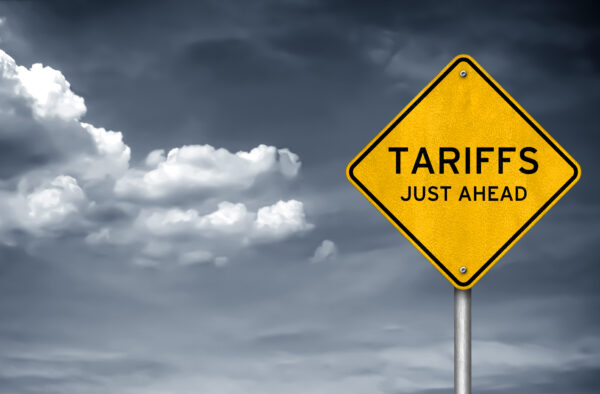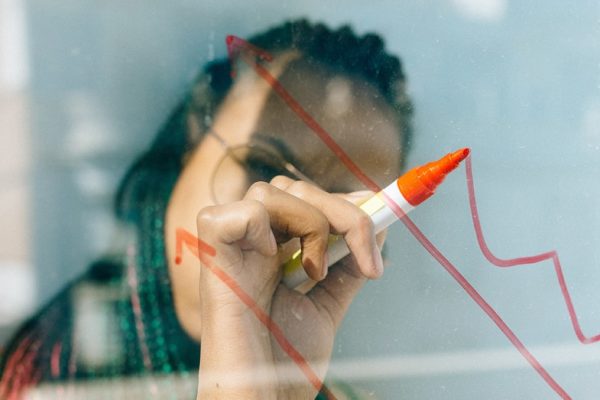Coronavirus and the Stock Market: What Should You Do?
With news of the coronavirus flooding our news sources daily, it should come as no surprise that our financial systems are currently feeling a knock-on effect. But just as with the virus itself, how worried should we be? When it comes to coronavirus and the stock market, should we be panicking and living in fear, or taking a step back and using common sense and a little bit of history to help us make a more realistic appraisal of the situation?
The coronavirus is not new – it’s been around for years. But it’s the current strain, COVID-19, that is bringing in a new level of uncertainty. Building a better awareness around COVID-19, and researching the facts for yourself rather than relying on mainstream media fear mongering, should be the first step in helping you to make better financial decisions during this period.
The news is undoubtedly a fantastic resource in many ways, but it is not necessarily the right place to turn if you’re trying to make investment decisions or take care of that nest egg you’ve worked so hard to build. If you were to believe the talking heads on MSNBC or FOX, the sky is literally always falling. And alongside the constant coverage of worldwide health crises, one of their favorite subjects is stock market fluctuations.
The initial wave of fear surrounding coronavirus and the stock market has undoubtedly caused a financial downturn; as is to be expected during times like this. But as our understanding of the virus and its global effects grows, so too does that upward turn on the stock market. Let’s clarify the confusion and panic with some real-world numbers, shall we?
The Market is Naturally Volatile
After an initial 12% decline in the market, we are starting to see the panic subside a little. At the start of March, the Dow Jones staged a 5% rally; a little bit of normalcy is starting to return to the market. Things were a bit overvalued, so a pull back was inevitable. The coronavirus may have been the catalyst for this pullback, but our clarity of thinking and historic awareness are helping to move things in the right direction.
Let’s not forget that it is actually pretty normal to have corrections, though they feel like a surprise every time. Remember – the S&P 500 (a measuring stick that uses 500 of the greatest companies in the U.S. to track market changes) was up over 30% last year!
And let’s also not forget that just ten years prior, it had reached a critical low during the financial crisis, dropping to 676. Then, in the space of just 10 years, the S&P 500 actually quadrupled in value! It also paid a dividend averaging 2% annually, meaning a $100,000 investment in 2009 would be worth more than $423,000 today (excluding taxes).
On average the market “corrects” by at least 10% every year. So change is more normal than most people think. That’s not to say that things can’t get worse, but there is no way to predict it accurately enough to make a difference. For example, late in 2018 the stock market was down nearly 20% in a few short months. And then last year it recovered and was up over 30%.
How often have you heard about this on your favorite news outlet? My guess is, you haven’t, or certainly not to any real extent. After all, reassuring news isn’t very marketable. It doesn’t keep you glued to the TV in a fear-induced trance. So remember: seek information beyond just the mainstream media. Research. Talk to a professional. Think calmly and logically.
Let History Be Your Guide
In 1918, the Spanish Flu Pandemic killed an estimated 20 million to 50 million people worldwide. In the United States, the number of dead was estimated to be around 675,000. The statistics are mind-boggling. Around 28% of the US population were infected, with about 0.5% of those ultimately succumbing to the disease. Globally, around 3% of the world’s population would die from Spanish Flu.
The Dow Jones Industrial average on January 2nd of 1918 stood at 76.68. One year later, the Dow Jones Industrial Average stood at 82.60. By January 2nd of 1920, the Dow Jones Industrial Average stood at 108.76. During this time, American life was on standstill. People were sick, dying, or afraid of dying. But the market managed to climb upwards and experience two years of solid growth.
By the end of 1920, the Dow Jones Industrial Average stood at 71.95. This was a more than 55% drop from the start of the year. The economic slowdown caused by Spanish Flu had finally caught up to the markets. But just like in any market downturn, there inevitably comes a market upturn. By the end of 1921, the Dow Jones Industrial Average stood at 80.80. The market would continue to grow ever so slightly, with a few hiccups here and there.
Coronavirus and the Stock Market Today
The worlds of 1920 and 2020 are very different. The coronavirus can spread much quicker in the age of air travel. Business supply chains are complex and global. And more people own stocks today than 100 years ago.
But medical technology has advanced, sanitation standards are infinitely better, and awareness travels just as fast as the virus. National preparedness is also greater than it was in 1920. It is difficult to make an apple to apple comparison. We truly are in uncharted territory. But history can always serve as a template.
So, what should YOU do?
Now that we have thrown in a little historical perspective, what should you do? If you are a long-term investor, you don’t care what the market does today. Coronavirus? The 2020 election cycle? Those are all just speed bumps on the road to financial freedom.
If you are a buy and hold investor, you should not care what happens today. The losses you see in your portfolio are paper losses. Since you will not need that money for some time in the future, those losses are meaningless today.
Take a step back, breathe, and remember that these temporary declines are the price we pay for long-term growth. Keep putting money away. Build up your emergency fund. And if you have cash above and beyond that, you can always use it for buying opportunities. If the market takes a dip, you can put a little bit of that cash to work. But the best thing to be doing is following the ABC’s. Always Be Contributing.
The key to feeling confident in your future is putting a solid financial plan into place and playing the long game. Qualified financial professionals can also help you make the most out of your wealth, both now and for the future.
If you are contributing to your investment and/or retirement accounts on a consistent basis and are disciplined enough to keep doing so during good times and bad, your odds of investing success are greatly magnified.
So, while coronavirus and the stock market might have us wanting to hold onto our cash, just remember: the world recovered from the Spanish Flu. It will recover from the coronavirus. And if you sit on the sidelines during this time, you might just miss out on the following economic upswing.
If you still have concerns and would like to discuss your financial options in more detail, get in touch and I’ll be happy to chat with you.












